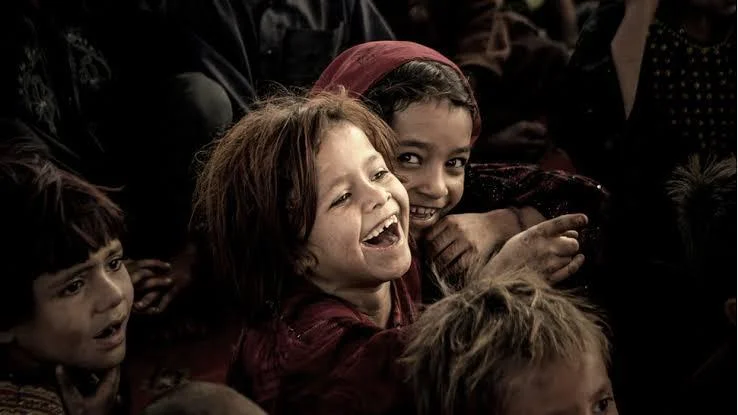Imagine being forced to flee your home, leaving everything you know behind, with no idea what the future holds. Where would you go? For millions of Afghans over the past four decades, the answer has been Pakistan. Pakistan currently hosts approximately 1.98 million officially registered refugees, the majority of whom are Afghans. Estimates suggest that 1.55 to 1.58 million of these are Afghan nationals, while the remaining come from countries such as Somalia, Bosnia, India, Myanmar, Iran, Sri Lanka, and Palestine. In addition to the registered population, there are substantial numbers of undocumented Afghans in Pakistan.
Government estimates place this number as high as 1.7 million. When combining registered and undocumented Afghans, the total Afghan refugee and migrant population could reach around 3.5 to 4 million. Despite facing significant challenges of its own, Pakistan has shown extraordinary kindness and generosity by giving refuge to millions of displaced people. It stands as one of the world’s leading refugee-hosting countries. As of early 2025, Pakistan provides shelter to approximately 1.4 million registered Afghan refugees under Proof of Registration (PoR) cards.
Although Pakistan is not a signatory to the 1951 Refugee Convention or its 1967 Protocol, it follows many principles of international refugee law through customary practice, working with UNHCR and other international partners under a 1993 agreement to register and protect refugees, providing assistance, and upholding humanitarian obligations. The government has also implemented the Solution Strategy for Afghan Refugees (SSAR) to improve access to healthcare, education, and livelihoods, while promoting social cohesion in host communities. This long-standing commitment to humanitarian aid underscores Pakistan’s role as a major refuge for those in need.
Historical Context: Four Decades of Refuge and Initiatives for Them:
While Pakistan has offered refuge to displaced populations from various countries over the years, Afghan refugees have consistently formed the largest and most enduring group. Their influx began in 1978 after the Saur Revolution and rose sharply following the Soviet invasion in 1979, creating one of the world’s longest protracted refugee situations. Pakistan hosted Afghans through the Soviet withdrawal, the civil wars of the 1990s, and the U.S.-led intervention from 2001 until 2021, when the Taliban regained control of Afghanistan. Most Afghan refugees live in Khyber Pakhtunkhwa (54%) and Balochistan (24%), the provinces bordering Afghanistan. Many are second- or third-generation refugees, having spent their entire lives in Pakistan.
Over the years, Pakistan has launched and supported numerous initiatives to address the needs of both refugees and host communities. One major initiative is the Refugee Affected and Hosting Areas (RAHA) programme, which delivers long-term support in education, healthcare, water, sanitation, infrastructure, environmental rehabilitation, and social protection. RAHA promotes inclusive growth, peacebuilding, vulnerability reduction, and community participation, aligning with Pakistan’s sustainable development goals.
Another key initiative is the Refugee Education Strategy–Pakistan, implemented with UNHCR support, through which around 56,000 refugee children attend over 146 public schools in Khyber Pakhtunkhwa, Balochistan, and Punjab. Refugee teachers are trained in the national curriculum to ensure quality education, while 51 Home-Based Girls’ Schools and satellite classes reach children in remote areas. Provincial education plans now include refugee students, with monitoring by education authorities.
NGOs also play a vital role. The Pakistan Poverty Alleviation Fund (PPAF), in partnership with UNHCR, runs a Poverty Graduation Programme benefiting over 3,000 Afghan refugee families in camps in Nowshera, Quetta, Pishin, and Islamabad. This program provides livelihood assets, enterprise development training, financial literacy, and skills training, with a strong focus on women’s empowerment. Many other humanitarian programs are also running in Pakistan for refugees.
Challenges and Repatriation Efforts
In recent years, refugee management has presented governance and security challenges. In response, the government approved a three-stage repatriation plan to regulate undocumented foreign nationals. Between April 1 to 23, 2025, approximately 118,400 undocumented individuals were returned to Afghanistan. These returns were facilitated through both the UNHCR Voluntary Repatriation Centers and government-enforced repatriations.
In 2025, Pakistan continues to host millions of Afghan refugees while managing returns in line with security and administrative considerations. Under the Illegal Foreigners’ Repatriation Plan, undocumented residents are being regulated, including the non-renewal of PoR cards after June 30, 2025, though the government is considering deadline extensions to allow for orderly returns. By balancing national sovereignty and security with humanitarian responsibilities, Pakistan continues to work with partners like UNHCR to support registered refugees while addressing domestic needs.
Facilitating Refugees : A Lasting Humanitarian Legacy
Pakistan’s role as a refuge for millions of displaced Afghans and other populations stands as a testament to its humanitarian legacy. Despite not being a party to international refugee conventions and facing internal economic and security challenges, Pakistan has consistently provided protection and assistance through national and international cooperation. Its sustained efforts to host, assist, and repatriate refugees responsibly highlight its significant contribution to global refugee protection and humanitarian responsibility.


